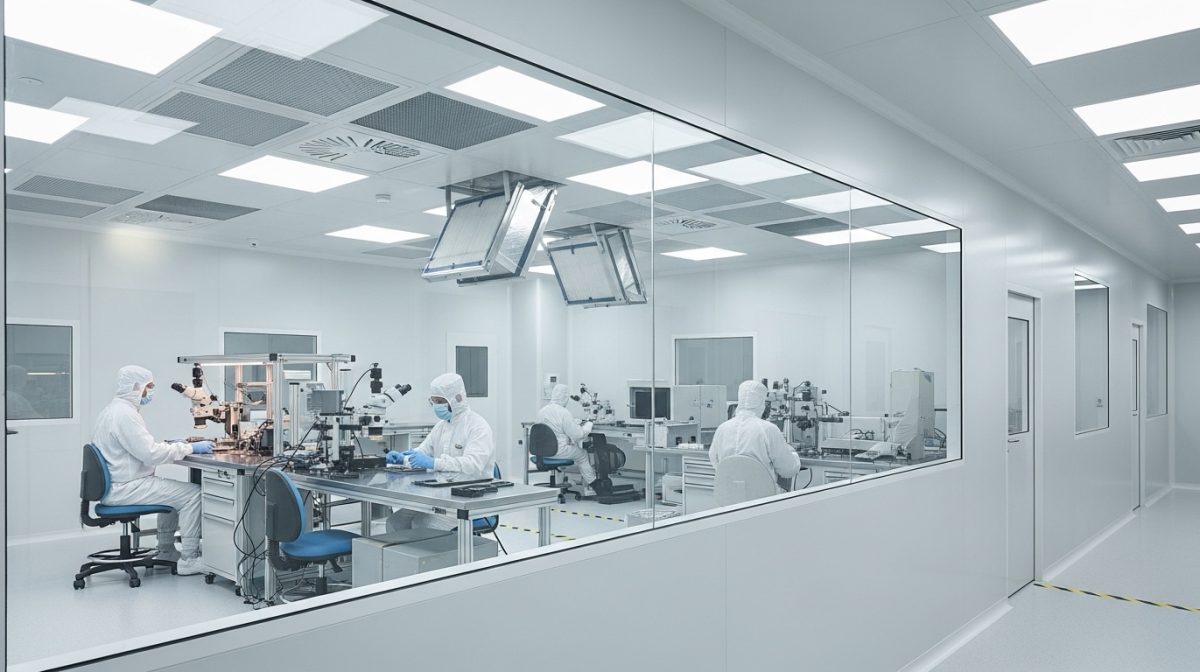The Importance of Clean Room Design in Modern Industry

In industries where precision and safety are paramount, maintaining environments free from contamination is essential. From pharmaceuticals to aerospace, even the tiniest particles can compromise the quality of products or the accuracy of research. This is why Clean room Design has become a cornerstone of modern industrial practices.
Clean room design goes beyond building sterile spaces. It involves a comprehensive approach that integrates airflow management, filtration systems, materials, and monitoring technologies to achieve strict international standards. By focusing on both function and efficiency, clean room design ensures that industries can meet compliance requirements while optimizing productivity.
What is Clean Room Design?
Clean room design is the specialized process of planning and constructing controlled environments where airborne particles, microbes, and chemical vapors are tightly regulated. Unlike standard rooms, clean rooms follow standards like ISO 14644, which define allowable particle counts per cubic meter.
The design process considers everything from air circulation and pressure to surface materials and equipment placement. Successful clean room design requires collaboration among engineers, architects, and compliance experts to create an environment tailored to industry-specific needs.
Why Clean Room Design Matters
The importance of clean room design is evident in the industries that rely on it most:
1. Pharmaceuticals and Healthcare
Drug manufacturing, vaccine production, and medical device assembly demand sterile environments. Proper clean room design ensures compliance with Good Manufacturing Practices (GMP) and reduces risks of contamination that could threaten patient health.
2. Electronics and Semiconductors
In microchip and electronics manufacturing, dust or static can cause costly defects. Clean rooms are designed with specialized airflow and humidity control systems to maintain particle-free environments.
3. Biotechnology and Research
Research labs need accurate, reproducible results. Clean room design minimizes contamination risks and provides the flexibility required for evolving scientific projects.
4. Aerospace and Precision Engineering
When creating components for aircraft and spacecraft, even microscopic particles can lead to malfunctions. Clean room design safeguards precision manufacturing processes.
5. Food and Beverage Industry
Clean room environments help maintain hygiene and safety in food processing, protecting consumers and ensuring compliance with global standards.
Core Elements of Effective Clean Room Design
Several principles form the foundation of successful clean room design:
- Airflow Management: Laminar or turbulent airflow systems sweep away particles and keep contaminants under control.
- Filtration Systems: HEPA and ULPA filters capture particles as small as 0.1 microns.
- Pressure Differentials: Positive or negative pressure is used depending on whether the facility needs to keep contaminants out or prevent them from escaping.
- Temperature & Humidity Control: Stable conditions not only ensure comfort but also prevent microbial growth and electrostatic discharge.
- Material Selection: Surfaces must be smooth, non-shedding, and resistant to microbial growth. Stainless steel, epoxy coatings, and polymer panels are commonly used.
- Layout and Workflow: Proper design ensures smooth movement of personnel and materials while minimizing contamination risks.
- Monitoring Systems: Integration of sensors and IoT devices allows real-time tracking of particles, airflow, and pressure levels.
Compliance and Standards
Clean room design must adhere to strict international standards. These include:
- ISO 14644 for classification of air cleanliness.
- Federal Standard 209E (historical reference, still used in some industries).
- GMP Guidelines from the FDA and EU, particularly relevant for pharmaceutical and biotech industries.
- Environmental and Safety Regulations that ensure both workers and end-users remain safe.
Adhering to these standards not only ensures product quality but also enhances a company’s reputation for reliability and safety.
Trends Shaping the Future of Clean Room Design
As industries evolve, clean room design continues to incorporate new technologies and approaches:
- Modular Clean Rooms
Prefabricated designs that are faster to build, scalable, and cost-effective. - Smart Monitoring Systems
IoT-enabled clean rooms with real-time data tracking and predictive maintenance. - Sustainable Design
Use of energy-efficient HVAC systems and eco-friendly building materials to reduce carbon footprints. - Flexible Layouts
Adaptable clean rooms that can be reconfigured for different projects or evolving compliance standards. - Advanced Materials
Surfaces with antimicrobial coatings and low-shedding properties enhance cleanliness and durability.
Choosing the Right Clean Room Design Partner
Selecting the right partner for clean room design is critical for businesses. Key considerations include:
- Proven expertise across multiple industries.
- Ability to tailor solutions to specific compliance requirements.
- Experience in integrating advanced monitoring and automation technologies.
- Commitment to energy efficiency and sustainability.
- Strong after-sales support for maintenance and upgrades.
A well-chosen partner ensures facilities remain compliant, efficient, and adaptable for future growth.
Conclusion
As industries become more advanced and regulations more stringent, the role of Clean room Design has never been more important. A well-planned clean room protects against contamination, ensures compliance, and supports precision-driven processes across sectors like healthcare, electronics, and aerospace.
By integrating sustainable practices, modular construction, and smart monitoring systems, the future of clean room design promises greater flexibility, efficiency, and environmental responsibility. For businesses looking to thrive in highly regulated industries, investing in clean room design is not just a requirement—it is a strategic move toward long-term success.





